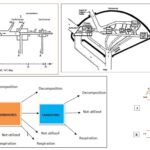IGCSE Biology 72 Views 1 Answers
Sourav PanLv 9November 15, 2024
State that discontinuous variation results in a limited number of phenotypes with no intermediates; examples include ABO blood groups, seed shape in peas and seed colour in peas
State that discontinuous variation results in a limited number of phenotypes with no intermediates; examples include ABO blood groups, seed shape in peas and seed colour in peas
Please login to save the post
Please login to submit an answer.
Sourav PanLv 9May 15, 2025
Discontinuous variation refers to the type of variation in which individuals within a population exhibit distinct phenotypes with no intermediates. This results in a limited number of discrete categories rather than a continuous range of traits.
Characteristics of Discontinuous Variation
- Distinct Phenotypes: Individuals can be classified into clear categories based on specific traits, with no gradual transitions between these categories.
- Influence of Single Genes: Traits that display discontinuous variation are often controlled by single genes (or a small number of genes), leading to distinct phenotypic expressions.
Examples of Discontinuous Variation
- ABO Blood Groups
- Human blood types are classified into four distinct groups: A, B, AB, and O. There are no intermediate blood types, illustrating clear categories based on the presence or absence of specific antigens.
- Seed Shape in Peas
- In pea plants (Pisum sativum), seed shape can be either round or wrinkled. This trait is determined by a single gene, resulting in two distinct phenotypes without any intermediate forms.
- Seed Colour in Peas
- Similarly, pea seeds can be yellow or green, again reflecting a clear distinction with no intermediate colors. This trait is also governed by a single gene.
0
0 likes
- Share on Facebook
- Share on Twitter
- Share on LinkedIn
0 found this helpful out of 0 votes
Helpful: 0%
Helpful: 0%
Was this page helpful?




